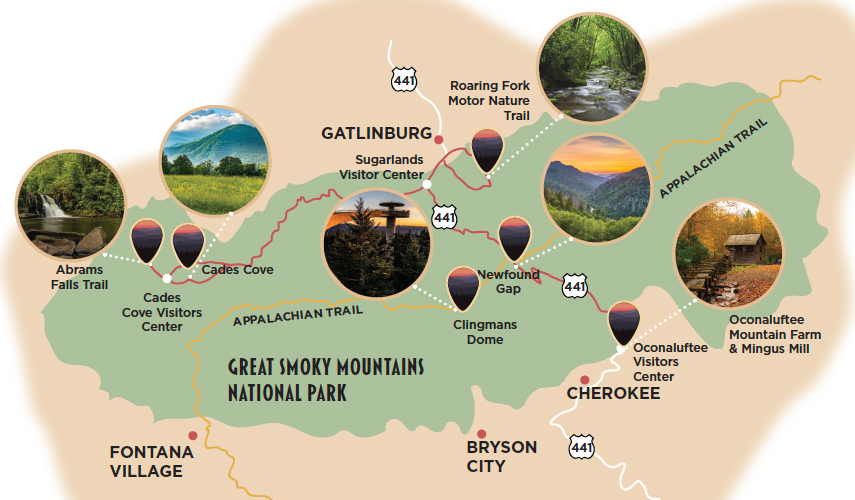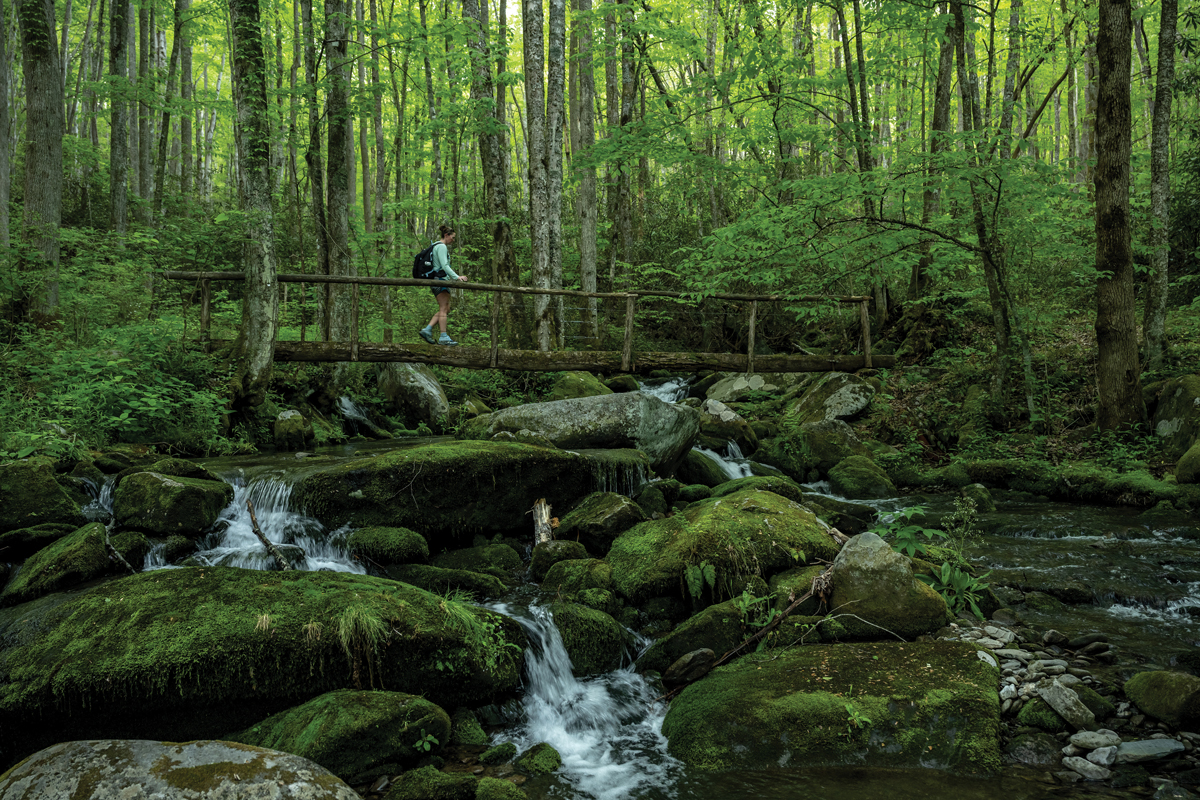Great Smoky Mountains National Park
Great Smoky Mountains National Park

Parking in GSMNP: It's important to have a valid parking tag on your vehicle when stopping in this national park for more than 15 minutes.
History
You have to see and explore one of the East’s largest tracts of wild land to really grasp it—and to appreciate the scale of the achievement that brought these majestic mountains back from the brink of destruction. In 1919, Acadia National Park in Maine became the East’s first national park. The Smokies was the East’s second, and the Southern Appalachians’ first, chartered by Congress in 1934. But the comparison ends there. Acadia was a comparatively tiny summer colony enclave protected (and yes, donated) by wealthy families. The vast Great Smokies was the first national park where the cost of the land was, in part, paid with federal funds.
Unlike early national parks in the West that were made from land already owned by the US government, by the 20th century, 80 percent of eastern America’s forest land had gone from public ownership into private hands, “mostly by timber barons determined to profit from ‘cut and run’ timber harvesting,” said a US Forest Service study. By 1901, only 7.4 percent of Southern Appalachian land was still virgin timber. Cataclysmic floods and 6 million cubic miles of soil erosion followed the deforestation. The tragic waste of that rich Southern Appalachian resource, and the desperate need to repair the damage, spurred the birth of both a national park in the Great Smokies and the Eastern national forests that surround it.
The Smokies, today known for its world-class biodiversity, has risen from poster child for environmental Armageddon to the most visited jewel in the crown of our nation’s “best idea.” That came only after a decades-long early-20th century battle between logging interests and the preservationists who set out to save the trees before logging could engulf all the ancient forests. Among those who saved what we have today were people like Charles Webb, editor and co-publisher of the Asheville Citizen-Times, Tennessee state representative Ann Davis, members of nearby trail clubs (like Asheville’s Carolina Mountain Club), authors like Horace Kephart (his Our Southern Highlanders is a must read), photographers like the storied Japanese immigrant George Masa, and many more. Today, Kephart, Masa, and other notables have their own namesake Smokies summits.
Private land was bought or foreclosed into public ownership, the same process that occurred in Virginia’s Shenandoah and along the Blue Ridge Parkway—other linchpins in Franklin Delano Roosevelt’s saving of the Southern Appalachians. FDR dedicated Great Smoky Mountains National Park in 1940 at a stone plaza that visitors still visit today in Newfound Gap.

The verdant temperate rainforest of the Smokies may be best viewed from a bridge over a gushing stream, such as this one over Jakes Creek.
Why Visit
It is difficult to describe the at-once grand, enigmatic beauty and natural significance of the Great Smokies without breathless hyperbole. Despite rapacious timber harvesting, a century of National Park Service stewardship has nurtured the recovery of a globally significant ecosystem that spans a half million acres, more than 800 square miles.
A UN-designated International Biosphere Reserve since 1988, it’s thought that 20 to 25 percent of the park’s forests are still old growth, some predating European settlement, and comprising one of North America’s biggest expanses of deciduous, temperate forest. The park’s rich cove hardwood groves contain more than 130 species of trees, and 1,500 species of flowering plants, more than any other national park.
The Smokies contain the longest ridge of the East’s highest peaks, the loftiest nearly 7,000 feet high, with amazing scenery and a northern climate. Seventy trail miles of the Appalachian Trail run this rocky crest, crossing the East’s third, fourth, sixth, and ninth highest summits. Thanks to early trail enthusiasts, and the Civilian Conservation Corps, this was one of the earliest completed sections of the AT.
Amazing historic significance resides in this domain of the Cherokee tribe. There’s early evidence of later arrivals too. This once-private land was home to vibrant communities. Today, old cabins, classic mills, and clapboard buildings still cluster in now-silent rural settlements. Many contain enriching interpretive sites, like the Oconaluftee River Trail and Mountain Farm Museum near Gatlinburg.
Plan Ahead to Escape the Crowds
Visit in winter and shoulder seasons, choose mid-week, off-the-beaten-path destinations, or head out early in the day (especially for hikers who need a parking spot). Or try the Smokies Quiet Walkways. Even in a park so popular, in many places along Newfound Gap Road, almost-secret little trails signed “Quiet Walkway” whisk you off the busy roadside into green, often stream-side solitude.
Learn more
For more detailed maps, planning tips, road condition updates, and more, visit nps.gov/grsm.